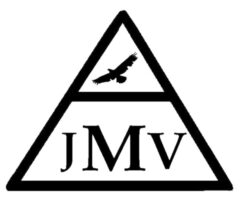Víctor Perez, Jamille Pasco
Cite
Perez V, Pasco J. Identifying asynchronies: work shifting and double triggering. J Mech Vent 2022; 3(4):190-194.
Abstract
Mechanical ventilation supports the work of breathing, improves gas exchange, and unloads the respiratory muscles, all of which require good synchronization between the patient and the ventilator.
Asynchronies occur when the ventilator’s breath delivery does not match the patient’s neural ventilatory pattern or is inadequate to meet the patient’s flow demand.
Patient–ventilator asynchrony can be easily detected by observing the patients in those extreme situations in which they fight the ventilator; nevertheless, the vast majority of asynchronies occur without major clinical signs and go undetected or corrected without measuring patient’s respiratory effort (either esophageal pressure or electrical activity of the diaphragm).
Synchrony problems are common, occurring in perhaps as many as 25% of patients receiving invasive ventilation and up to 80% of patients receiving noninvasive ventilation.
In this concise review, we describe work shifting and double triggering asynchronies.
Keywords
Patient-ventilator asynchronies, work shifting, double triggering
References
| 1. Epstein S. Optimizing Patient-Ventilator Synchrony. Seminars in Respiratory and Critical Care Medicine 2001; 22(2):137-152. https://doi.org/10.1055/s-2001-13828 PMid:16088669 |
| 2. Branson RD, Blakeman TC, Robinson BR. Asynchrony and Dyspnea. Respir Care 2013; 58(6): 973-986. https://doi.org/10.4187/respcare.02507 PMid:23709195 |
| 3. Gilstrap D, MacIntyre N. Patient-ventilator interactions. Implications for clinical management. Am J Respir Crit Care Med 2013; 188:1058-1068. https://doi.org/10.1164/rccm.201212-2214CI PMid:24070493 |
| 4. Sassoon C. Triggering of the ventilator in patient-ventilator interactions. Respir Care 2011; 56:39-51. https://doi.org/10.4187/respcare.01006 PMid:21235837 |
| 5. Thille AW, Rodriguez P, Cabello B, et al. Patient-ventilator asynchrony during assisted mechanical ventilation. Intensive Care Med 2006; 32:1515-1522. https://doi.org/10.1007/s00134-006-0301-8 PMid:16896854 |
| 6. Bruni A, Garofalo E, Pelaia C, et al. Patient-ventilator asynchrony in adult critically ill patients. Minerva Anestesiol 2019; 85(6):676-688. https://doi.org/10.23736/S0375-9393.19.13436-0 PMid:30762325 |
| 7. Damiani L, Bruhn A, Retamal J, et al. Patient-ventilator dyssynchronies: Are they all the same? A clinical classification to guide actions. Journal of Critical Care 2020; 60:50-57. https://doi.org/10.1016/j.jcrc.2020.07.016 PMid:32739760 |
| 8. Kacmarek R, Villar J, Blanch L. Cycle asynchrony: always a concern during pressure ventilation. Minerva Anestesiol 2016; 82(7):728-730. PMID: 26859156 |
| 9. Tobin M, Jubran A, Laghi F, et al. Patient-ventilator interaction. Am J Respir Crit Care Med. 2001; 163(5): 1059-1063. https://doi.org/10.1164/ajrccm.163.5.2005125 PMid:11316635 |
| 10. Gilstrap D, Davies J. Patient-ventilator interactions. Clin Chest Med 2016; 37(4):669-681. https://doi.org/10.1016/j.ccm.2016.07.007 PMid:27842747 |
| 11. Marini J, Rodriguez R, Lamb V. The inspiratory workload of patient-initiated mechanical ventilation. Am Rev Respir Dis 1986; 134(5):902-909. https://doi.org/10.1164/arrd.1986.134.5.902 PMid:3096177 |
| 12. Nilsestuen JO, Hargett KD. Using Ventilator Graphics to Identify Patient-Ventilator Asynchrony. Respir Care 2005; 50(2):202-234. PMID: 15691392 |
| 13. Branson R, Blakeman T, Robinson B. Asynchrony and dyspnea. Respir Care 2013; 58(6): 973-989. https://doi.org/10.4187/respcare.02507 PMid:23709195 |
| 14. Boysen P, McGough E. Pressure-control and pressure support ventilation: flow patterns, inspiratory time, and gas distribution. Respir Care 1988; 133: 126-134. |
| 15. Kacmarek R, Chipman D. Basic principles of ventilator machinery. In Tobin M, editor. Principles and practice of mechanical ventilation, 2nd ed. New York: McGraw-Hill; 2006; 53-95. |
| 16. Chatburn R. Classification of mechanical ventilators. In Tobin M, editor. Principles and practice of mechanical ventilation, 2nd ed. New York: McGraw-Hill; 2006; 37-52. |
| 17. Mireles-Cabodevila E, Siuba M, Chatburn R. A taxonomy for patient-ventilator interactions and a method to read ventilator waveforms. Respir Care 2022; 67(1):129-148. https://doi.org/10.4187/respcare.09316 PMid:34470804 |
| 18. Shokry M, Yamasaki K. Patient effort at a glance. J Mech Vent 2021; 2(4):147-148. https://doi.org/10.53097/JMV.10038 |
| 19. MacIntyre N, McConnell R, Cheng K, et al. Patient-ventilator flow dyssynchrony: flow-limited versus pressure-limited breaths. Crit Care Med 1997; 25(10):1671-1677. https://doi.org/10.1097/00003246-199710000-00016 PMid:9377881 |
| 20. Chatburn R, Mireles-Cabodevila E. 2019 Year in Review: Patient-Ventilator Synchrony. Resp Care 2020; 65(4):558-572. https://doi.org/10.4187/respcare.07635 PMid:32213603 |
| 21. Beitler J, Sands S, Loring H, et al. Quantifying unintended exposure to high tidal volumes from breath stacking dyssynchrony in ARDS: The BREATHE criteria. Intensive Care Med. 2016; 42: 1427-1436. https://doi.org/10.1007/s00134-016-4423-3 PMid:27342819 PMCid:PMC4992404 |
| 22. Akoumianaki E, Lyazidi A, Rey N, et al. Mechanical ventilation-induced reverse-triggered breaths: a frequently unrecognized form of neuromechanical coupling. Chest 2013; 143:927-938. https://doi.org/10.1378/chest.12-1817 PMid:23187649 |
| 23. de Haro C, Lopez-Aguilar J, Magrans R, et al. Double cycling during mechanical ventilation: frequency, mechanisms, and physiologic implications. Crit Care Med 2018; 46(9):1385-1392. https://doi.org/10.1097/CCM.0000000000003256 PMid:29985211 |
